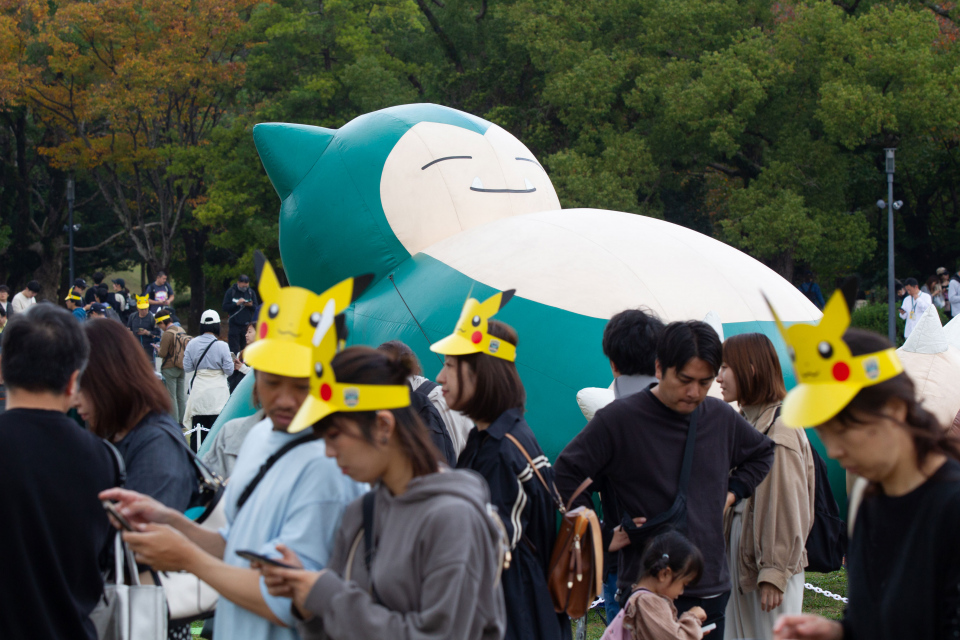
Sky-gazers worldwide may get the chance to see a celestial display this week as the annual Leonid meteor shower reaches its peak.
The Leonids are set to peak at 1 p.m. ET Monday, according to EarthSky. You may start glimpsing meteors at 11 p.m. Sunday local time, which is when the constellation Leo rises over the horizon. But it’s best to watch for them between 4 a.m. Monday and sunrise local time, said Robert Lunsford, fireball report coordinator for the American Meteor Society.
“Unlike a lot of (meteor) showers, the Leonids have a very sharp peak,” Lunsford said, adding there is only one good night for viewing.
The Leonids’ parent comet, 55P/Tempel-Tuttle, is to thank for this brief duration. The size of the comet’s debris trail is small, so Earth passes through it for a short amount of time.
The meteors you’ll see around 11 p.m. Sunday will be Earth grazers, Lunsford said, which means they’ll last longer than normal and will shoot across a large portion of the sky. “But you won’t see as many because a lot of the Leonid activity will be shooting downward below the horizon,” he added.
Under clear weather conditions, you can expect to see 10 to 15 meteors per hour.
Showers and storms
While a meteor shower is expected this year, the Leonids are known for occasionally producing tremendous meteor storms, with at least 1,000 meteors per hour.
The last Leonid meteor storm was in 2002. However, one of the most memorable storms occurred in 1966 when “we passed right through the center of one of the Leonid streams and rates were estimated at 40 meteors per second,” Lunsford said.
That storm had meteor activity so prevalent in the sky that meteors appeared to fall like rain.
High meteor activity coincides with when the comet 55P/Tempel-Tuttle reaches perihelion — its closest approach in orbit to the sun. It takes the comet 33 years to orbit the sun, so the larger Leonid meteor showers — and sometimes storms — tend to occur about every 33 years.
For a storm to happen, Earth has to pass through a dense part of the comet’s debris during perihelion, but sometimes our planet only skims the outskirts.
The next shower that will coincide with the comet’s orbital cycle will take place in 2033, but it is not expected to be a storm, Lunsford said. “We may see rates of around 100 an hour, which is comparable to the Geminids,” he said, “but we certainly don’t expect any storms which are 1,000 meters an hour.”
Upcoming meteor showers
Here are the peak dates of the two remaining meteor showers anticipated this year, according to the American Meteor Society and EarthSky.
Geminids: December 13-14
Ursids: December 21-22
Upcoming supermoon
Look out for the last full supermoon this year.
December 4: Cold moon
Sign up for CNN’s Wonder Theory science newsletter. Explore the universe with news on fascinating discoveries, scientific advancements and more.
For more CNN news and newsletters create an account at CNN.com
LATEST POSTS
- 1
 Vote in favor of your #1 Kind of Cap
Vote in favor of your #1 Kind of Cap - 2
 5 Must-Attempt Fascinating Dishes from Around the World
5 Must-Attempt Fascinating Dishes from Around the World - 3
 Select Your Go-To Bluetooth Earphones
Select Your Go-To Bluetooth Earphones - 4
 Figure out How to Explore Your Direction to the Best Dental Embed Trained professional: A Far reaching Manual
Figure out How to Explore Your Direction to the Best Dental Embed Trained professional: A Far reaching Manual - 5
 Vote in favor of the bloom plan that adds a bit of excellence to your life!
Vote in favor of the bloom plan that adds a bit of excellence to your life!
 Moving Pool Highlights for 2024
Moving Pool Highlights for 2024 Most loved Broiled Chicken: Which Chain Rules?
Most loved Broiled Chicken: Which Chain Rules? Vote in favor of the blossom plan that adds a hint of excellence to your life!
Vote in favor of the blossom plan that adds a hint of excellence to your life! The Significance of Health Projects in Senior Protection.
The Significance of Health Projects in Senior Protection. The most effective method to Settle on Informed Conclusions about Senior Insuranc.
The most effective method to Settle on Informed Conclusions about Senior Insuranc. 山田杏奈、作品への起用理由は聞かない「あまり気にせずに、自分のベストを尽くしたい」<恋に至る病>(WEBザテレビジョン)
山田杏奈、作品への起用理由は聞かない「あまり気にせずに、自分のベストを尽くしたい」<恋に至る病>(WEBザテレビジョン) 『ポケモン GO』再ブーム到来!地方自治体が注目で協力的 単発イベント経済効果は74億円…成功した訳【ナイアンティック担当者、長崎市長インタビュー】(オリコン)
『ポケモン GO』再ブーム到来!地方自治体が注目で協力的 単発イベント経済効果は74億円…成功した訳【ナイアンティック担当者、長崎市長インタビュー】(オリコン) Find the Mysteries of Effective Objective Setting: Transforming Dreams into Feasible Targets
Find the Mysteries of Effective Objective Setting: Transforming Dreams into Feasible Targets DeNA 「ハマのガッツマン」桑原将志と18年目終えた伊藤光が「海外フリーエージェント権」を行使(スポニチアネックス)
DeNA 「ハマのガッツマン」桑原将志と18年目終えた伊藤光が「海外フリーエージェント権」を行使(スポニチアネックス)













